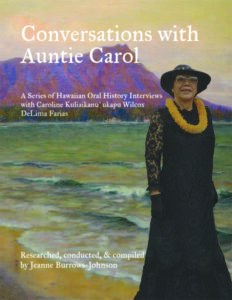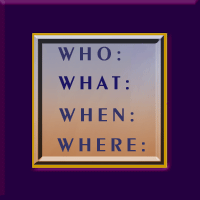CONGRATUALATIONS! YOU’VE SUCCESSFULLY CONDUCTED AN INTERVIEW!
Regardless of whether an interview is the first or the hundredth, I hope you will feel a sense of accomplishment while parting company with whomever you’ve interviewed! By this point, you should have an audio (if not visual) recording of the dialogue, plus notes you’ve composed prior to and during your conversation. You should also have a signed interviewee release that can allow you to draw from the experience indefinitely.
YOUR RELATIONSHIP WITH YOUR SUBJECT
In my last discussion of general and oral history interviews, I noted that it is good to impress your subject positively. Doing so includes: projecting a pleasing appearance and voice; demonstrating the level of your commitment, as shown by your research and organization of pertinent questions; and, your sensitivity to their physical, mental, and emotional circumstances.
That last issue is one that is often neglected by professional, as well as novice, interviewers. Too often a sense of righteousness on the part of the interviewer as truth teller can prevent development of a significant rapport with the interviewee. While it is important to maintain a professional relationship, the lack of a rapport with your subject may lead to a diminished level of trust and desire to reveal themselves fully.
YOUR PARTING WORDS
As you prepare to depart from an interview, you will want to leave the door between you and your subject open to further communication. After all, they’ve trusted you with a part of themselves and they want to know that you’ll value what they have shared with you. Even if you have not established a warm relationship, you will want to facilitate future communication and assure them that they will have an opportunity to view a transcript of the interview.
This does not mean you are relinquishing your role as the interviewer, nor does it imply you are going to change revealing the realities of your conversation. However, if errors are found by either of you, there should be a means for adding explanatory notes. This is especially useful in clarifying names, relationships, numbers, dates, and sequences, which may have been transposed or mistakenly described.
EDITORIAL PROCEDURES
During the transcription and editorial process, you may need to communicate with your interviewee to gain clarity on numerous points. To maintain accurate records, it is good to receive replies to your questions by email or other written documentation.
This is especially useful if there are conflicts regarding the meaning of a passage. After all, the interviewee is relaying answers to your questions through the lens of their point of view. While you may never agree with their explanation, the transcript and your notes will allow future readers and/or listeners to experience a close approximation of the event and draw their own conclusions. This is why clear records of all your communication and notes are so important.
The method[s] of annotation you choose for your transcript can take several forms. This is where your creativity comes into play. Personally, I try to avoid footnotes. Instead, I employ bracketed statements for minor clarification and section endnotes for issues dealing with proper nouns and other facts that may stimulate a future reader to pursue answers to their own questions.
Although the interviewer should not remove actual dialogue, you can provide clarification of key points by including a glossary of foreign and specialized vocabulary, as well as an index. Some authors dislike the use of indices if they plan to publish via a downloadable vehicle that may render pagination inaccurate and irrelevant. However, readers of a work published on the Internet may be able to utilize a find/search tool to locate terms they wish to revisit and readers of a hardcopy edition will be pleased with the inclusion of an easy reference tool at the back of the work.
Another means for heightening the usefulness of your final product is separating your transcript into sections. If the interview was conducted during multiple sessions, utilization of chapter breaks is quite logical. Even when the conversation was held on a single occasion, separating sequenced questions and answers provides natural breaks.
Such a layout should facilitate communication between you and your subject[s] as you review the nearly finished project. Once you have completed editing and annotating your transcript, you can proceed to shaping a final format to meet any requirements for publication. [See my previous blog, Interviews & Oral Histories #3, for the closing discussion of interview publication.]
FUTURE INTERVIEWS WITH YOUR SUBJECT
The potential for scheduling future interviews may depend on issues beyond a mutual desire to do so. For example, if the interview is part of a larger project controlled by someone else, you may be limited in continuing your relationship with your subject. And, although the current publisher may express an interest in further interviews, shifts within their organization may preclude future publishing through them. Even when you are working on a wholly freelance basis, your ability to publish may depend on your finding a new source willing to take on the project. And if you decide to expand the initial work into a series of articles or even a book, the task may become even more challenging.
As I’ve noted before, planning, executing, and publishing an interview is a unique experience. Even without the permanency of the Cloud, an interview lives far beyond the event itself! The effort you put into researching your subject’s life and work may prove of interest to people far beyond your targeted readership. The dialectical elements of the conversation, introductory remarks, annotations, and other explanations will serve not only to illuminate your subject, but also your own life’s work.
In my next blog about interviews, I will discuss the renewal and publication of oral history interviews I conducted more than 25 years ago with a dear Hawaiian auntie whose family history is very interesting…The title is, Conversations with Caroline Kuliaikanu`ukapu Wilcox DeLima Farias.
Wishing you the best in your creative endeavors,
Jeanne Burrows-Johnson, author, consultant, and motivational speaker
For further information on interviews and oral histories see:
Overview of Interview and Oral History Projects, June 2015
Researching for Interviews, July 2015
Conducting Interviews, May 2016
To learn more about the award-winning Natalie Seachrist Hawaiian Mysteries, including Murders of Conveyance [Winner, Fiction Adventure-Drama, 2019 New Mexico-Arizona Book Awards] and other projects, please drop in at my author’s website JeanneBurrows-Johnson.com. You’ll even find Island Recipes that might inspire your culinary creativity.
For more ideas to strengthen your Wordpower© and branding, please visit: Imaginings Wordpower and Design Consultation.
Follow Me:
Amazon, Arizona Authors Association, Apple Books
Audible, Authors Den, Barnes and Noble, Blogarama, Book Bub
Cozy Mysteries-Unlimited, Facebook, Good Reads, Hometown Reads
Book sellers may contact book distributors such as:
Baker & Taylor, Follett, IPG, Ingram, Mackin, Midpoint, TitleWave







